The architect Arturo Franco was awarded with the BigMat National Prize in Spain’21 and the Special Mention for Small-Scale Projects for his O Fieiro house project. The proposal includes the rehabilitation of a small stable for animals, a farmhouse from the year 1920 built with stone walls of large well-arranged granite ashlars.
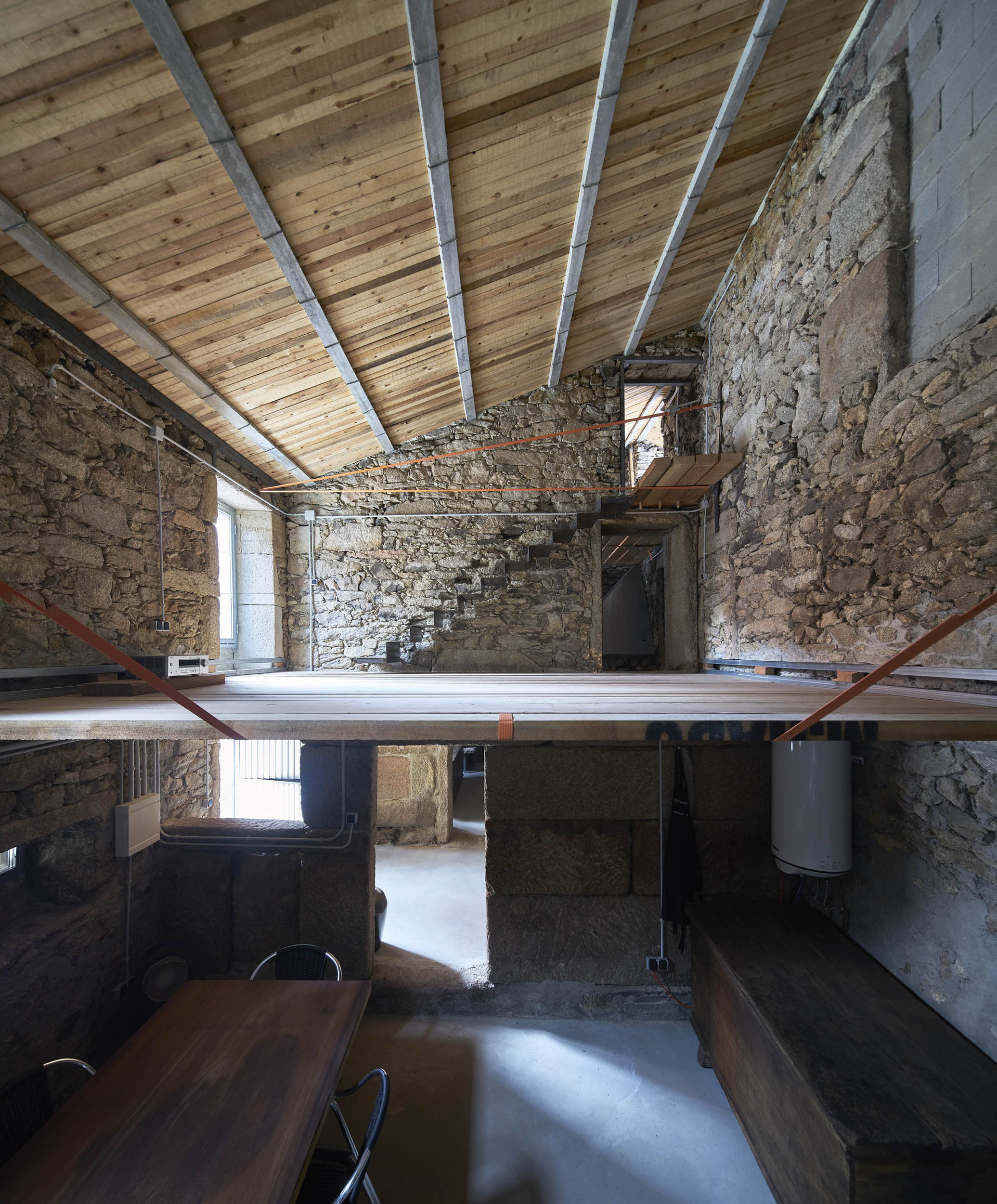
To renovate the construction and transform it into a single-family home, the concept takes advantage of the original system of load-bearing walls that work in compression and use it as a container and support for a new structure of wooden floors working in tension.
Casa o Fieiro in Mazaricos, A Coruña, Spain, by Estudio Arturo Franco
BigMat National Prize in Spain’21
Status: built
Year: 2020
Location: A Coruña, Spain
Design lead: Arturo Franco
Building engineer: Diego Castellanos
Collaborators: Patricia Herráez, Mario Azorín
Photographer: Alfonso Quiroga
The village of O Fieiro is located in the natural environment of Mount Pindo, known as the Celtic Olympus, a granite rock formation from which all the traditional Galician houses in the area emerge.
The project includes the rehabilitation of a small stable for animals, a 1920 farmhouse built with stone walls of large well-arranged granite ashlars, 70-80 cm thick, with a gabled roof of fiber cement plates supported on a prestressed concrete joist structure.
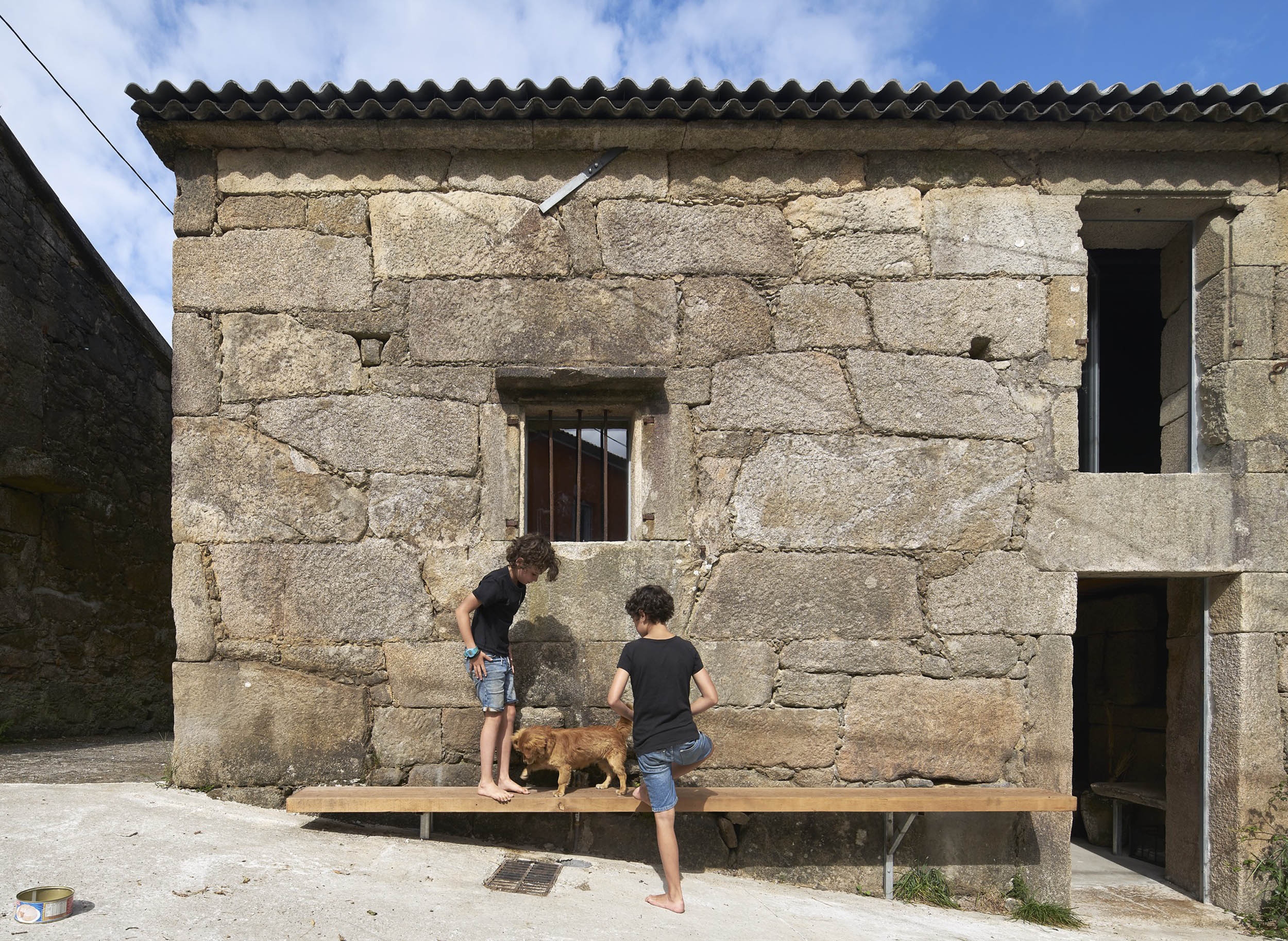
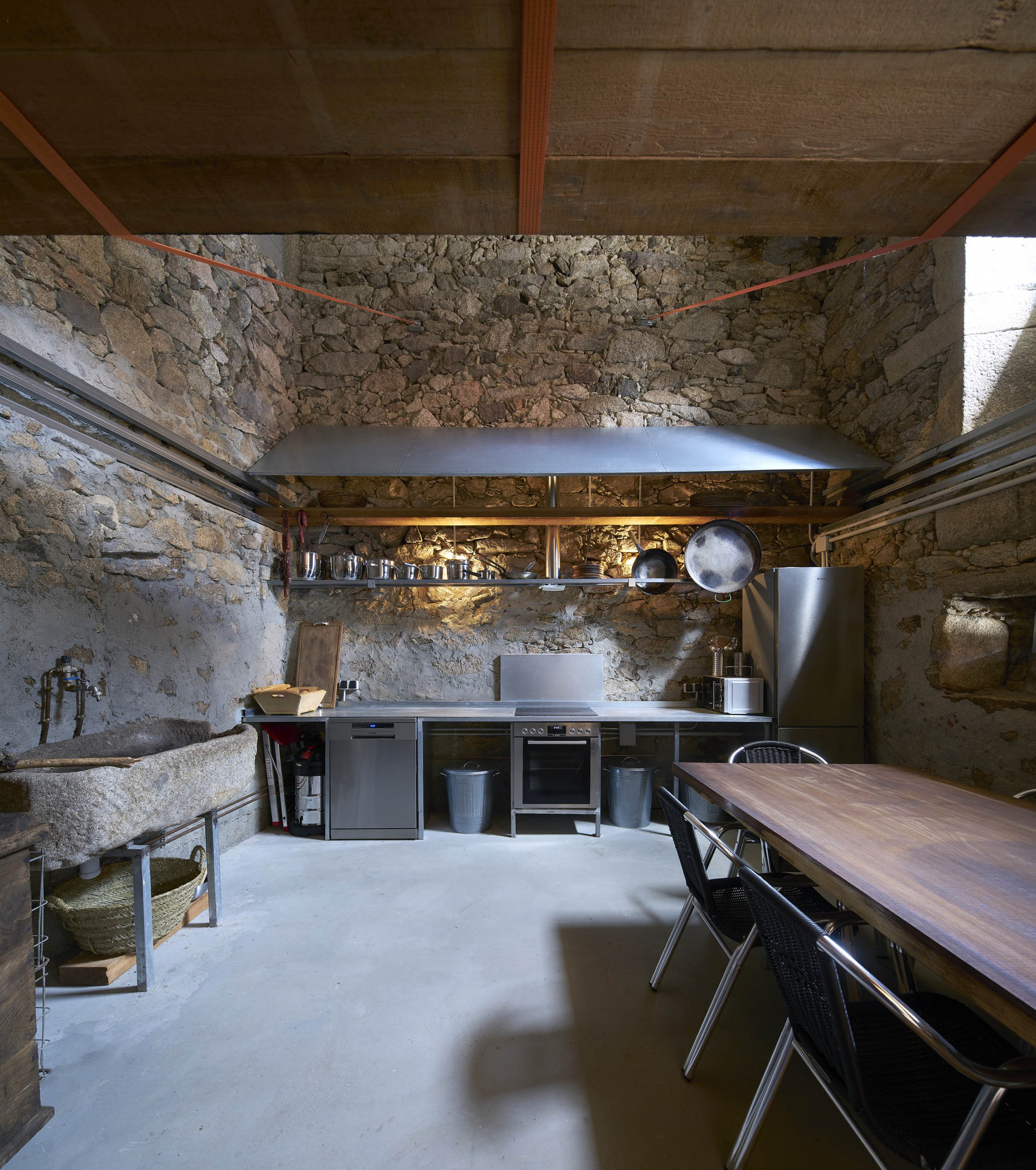
The original house had an access corridor located in the center, separating two spaces, in one of them the stable for cattle was located, while in the other there was a kitchen with a stone oven and a niche where the sink, under the window. This space gave access to an upper floor, now demolished, through a stone staircase, where the rooms were located.
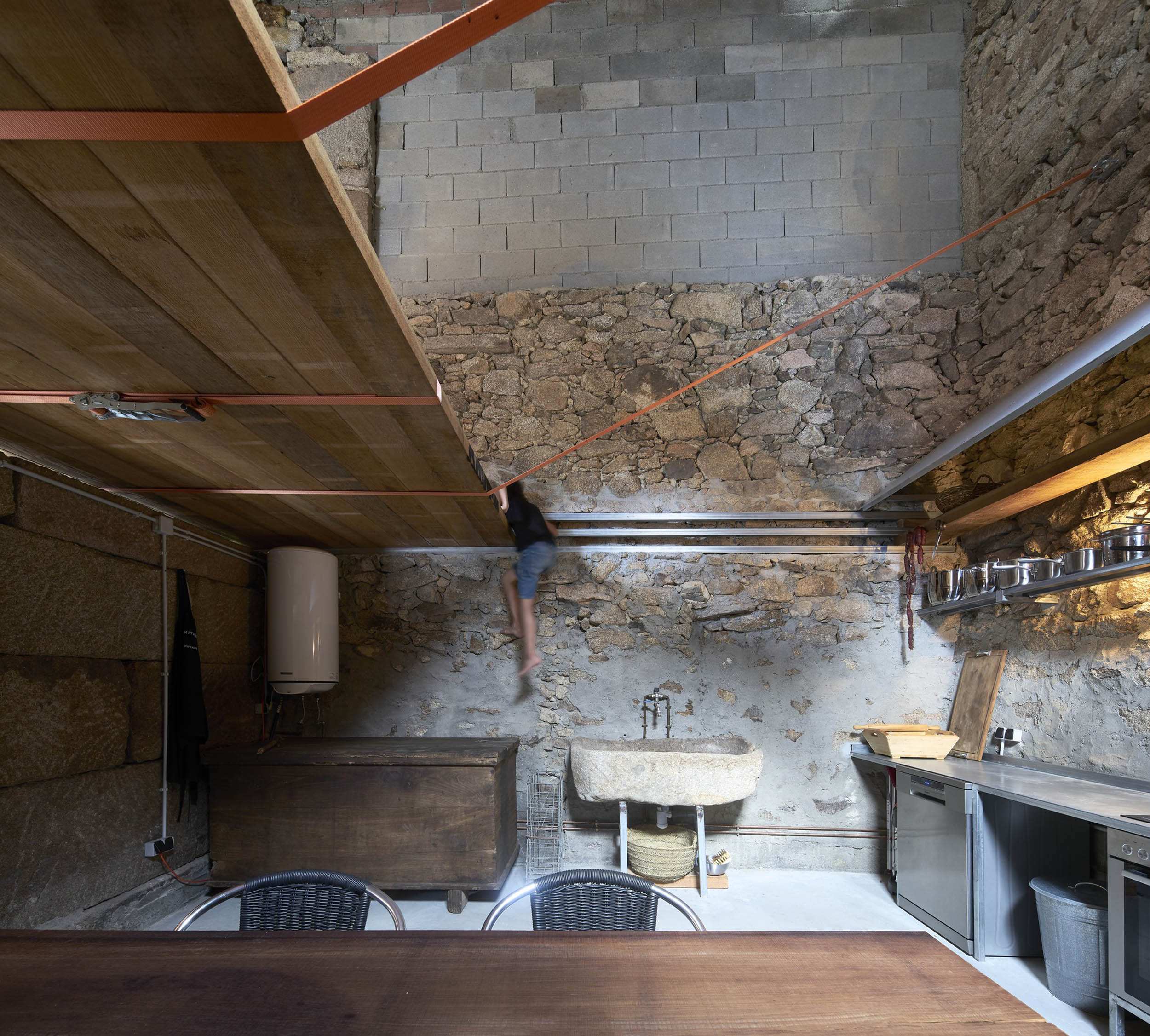
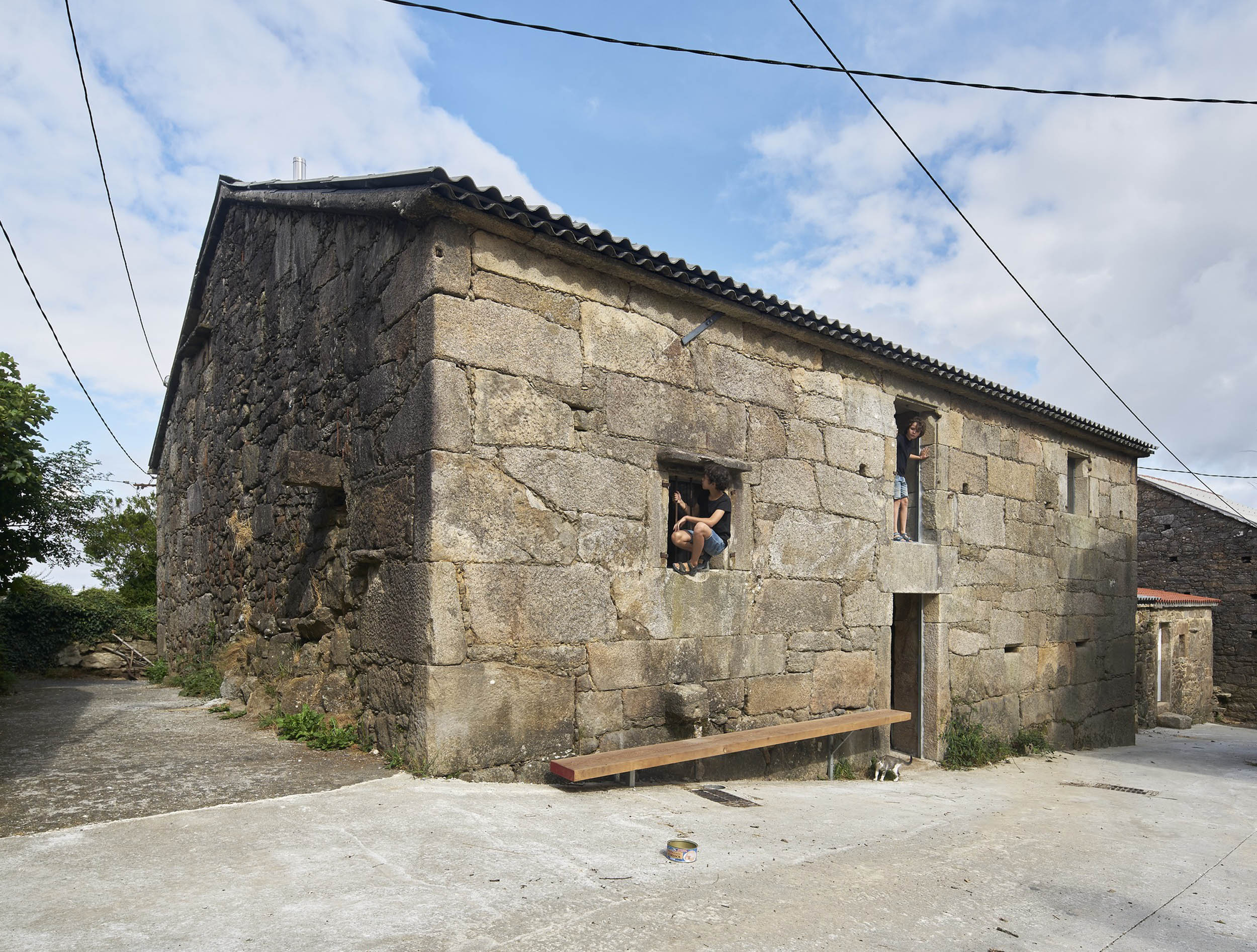
Adjacent to the house, to the northeast, there is a single-story stone attached volume, with a gabled roof, which housed a warehouse. On the southwest side, there is another volume integrated into the main volume, with two floors above ground, the second floor also demolished and also used as a warehouse. None of these volumes was connected from the inside, each one having its access from the outside.
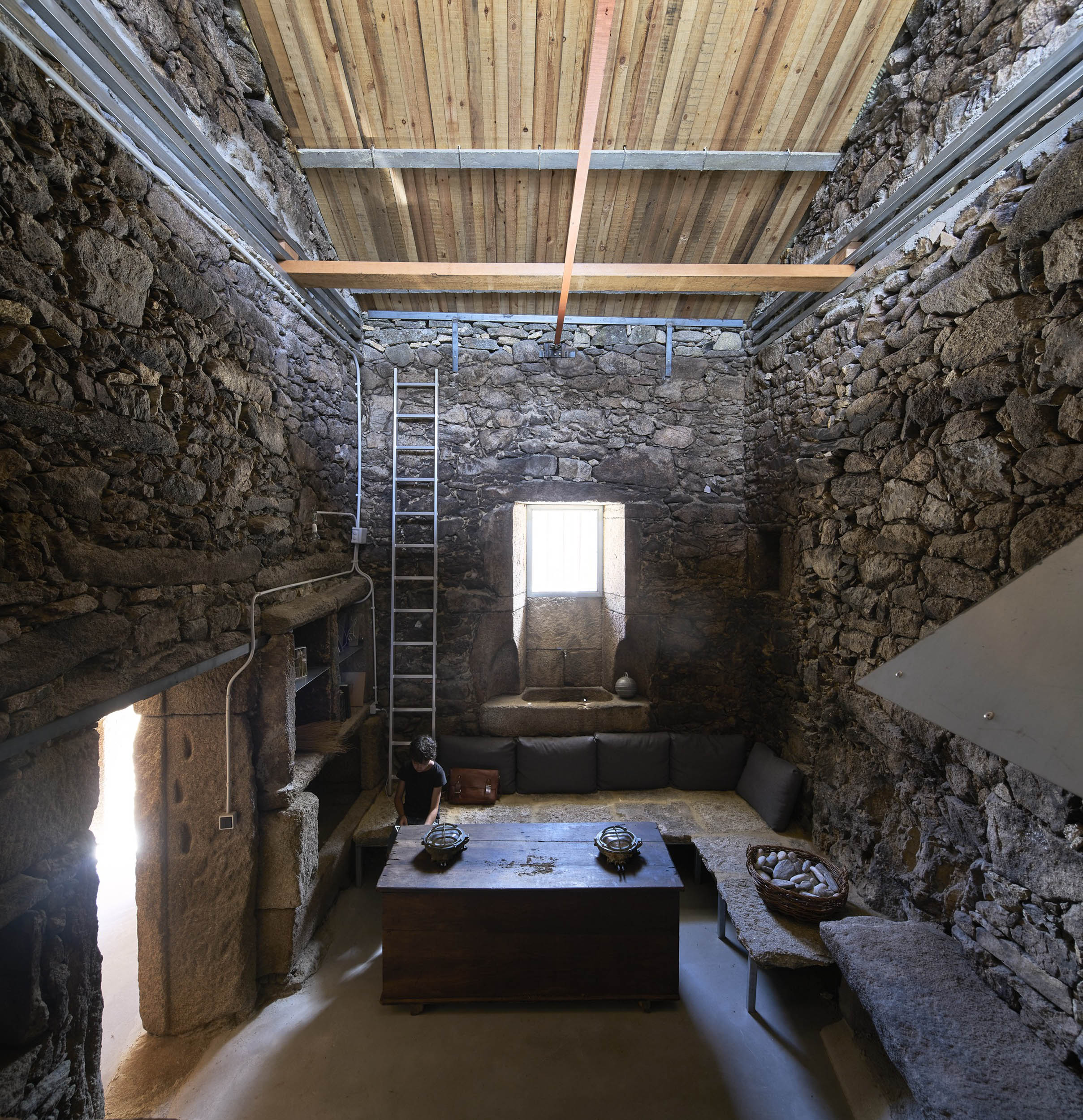
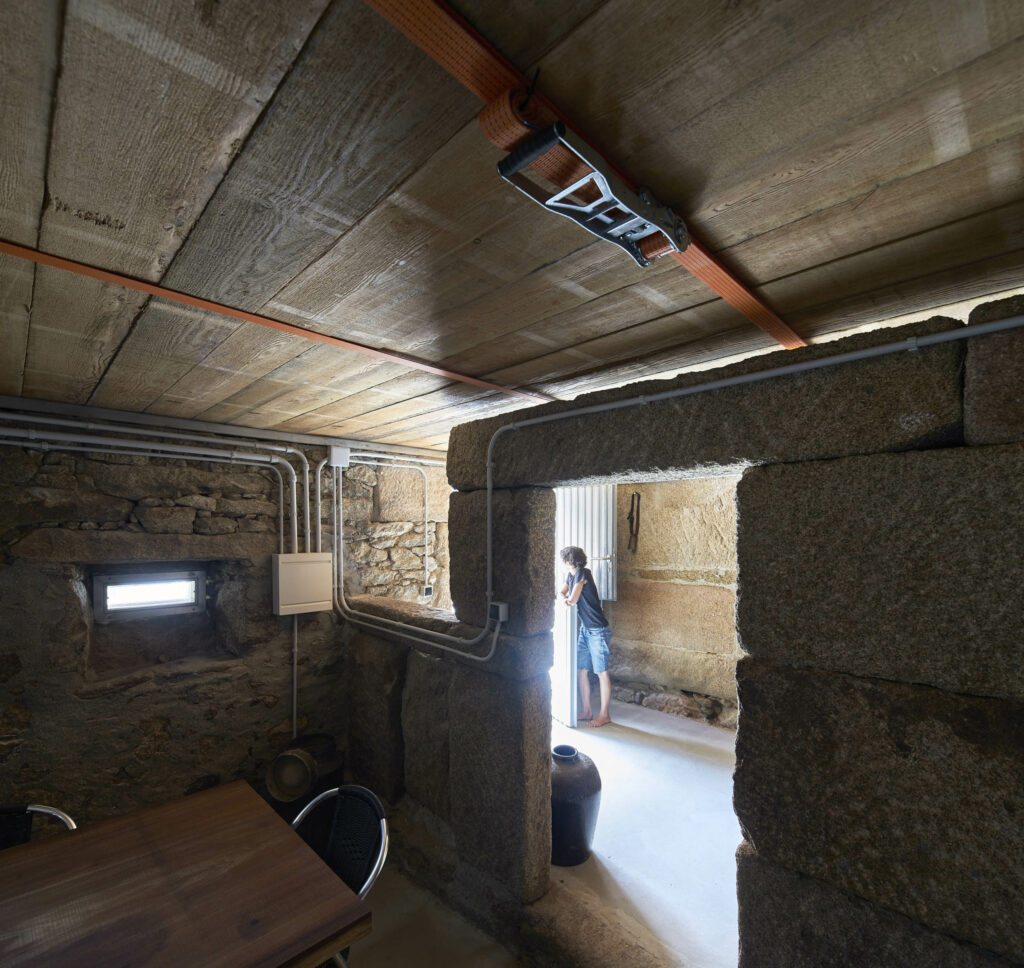
The intervention to rehabilitate the block and transform it into a house is based on the general concept of taking advantage of its system of load-bearing walls that work in compression and use it as a container and support for a new structure of wooden floors working in tension.
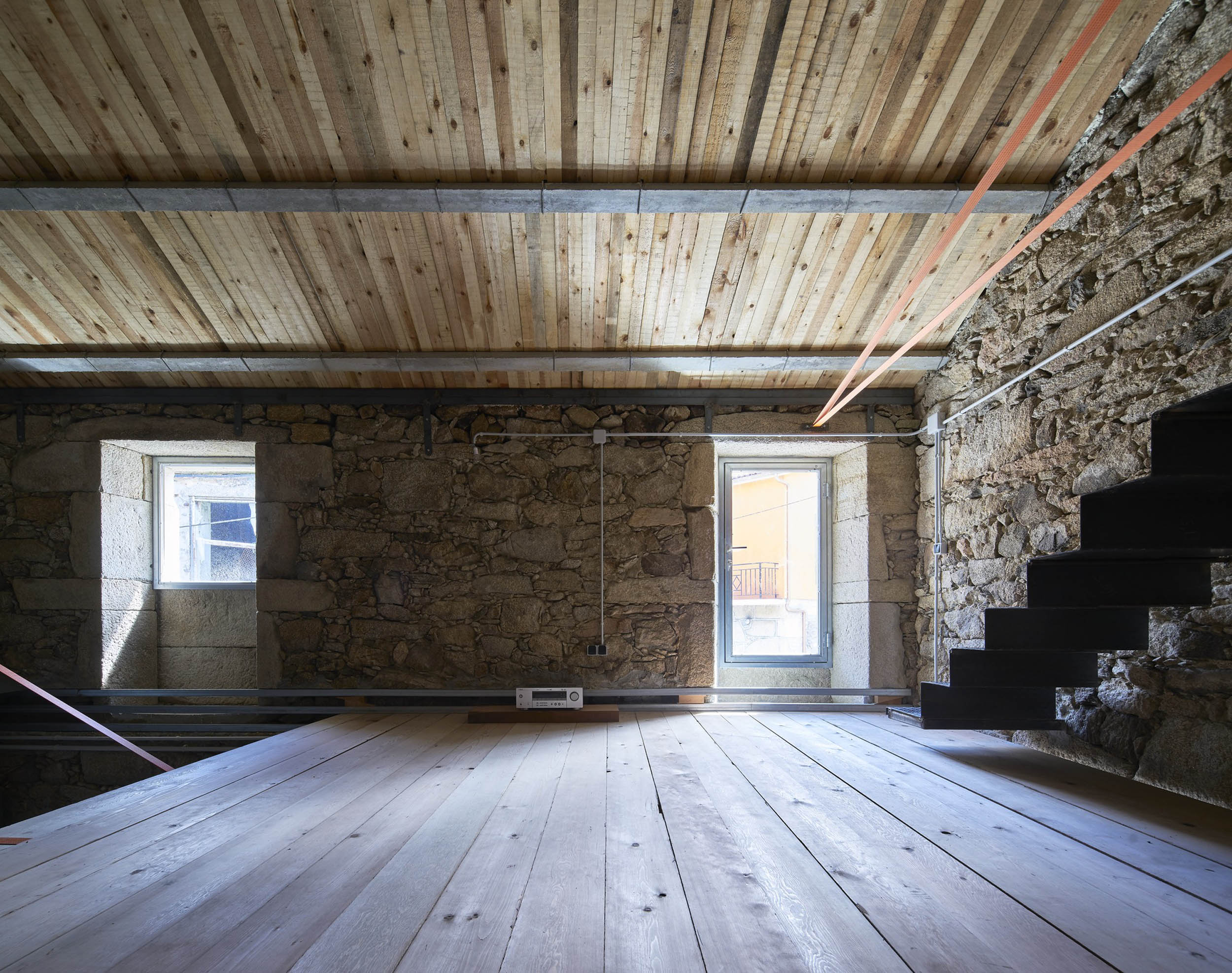
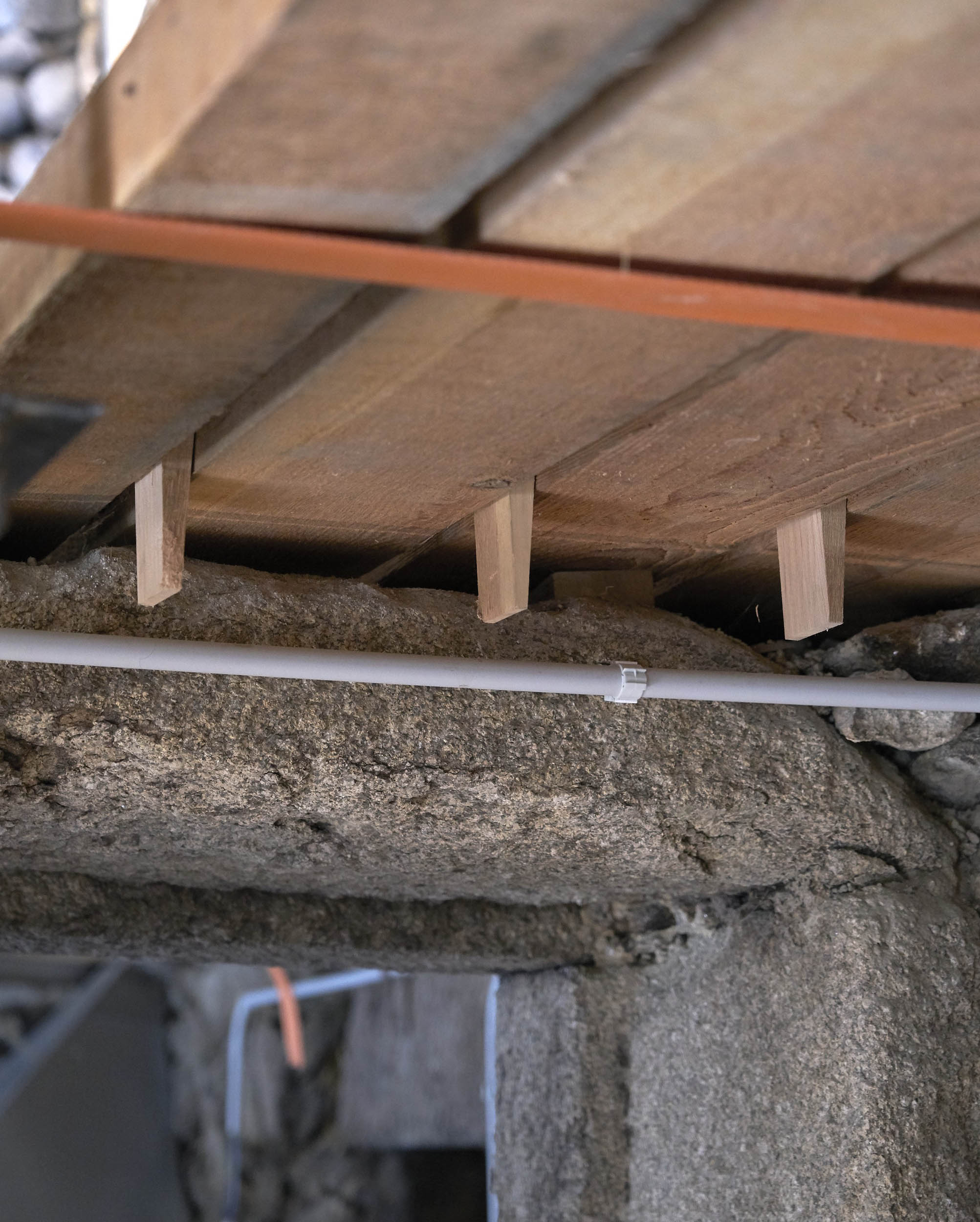
The construction and structural system are solved with three materials, wood, steel, and truck straps, in collaboration with the original stone.
First, mechinal openings are made in the masonry walls at different heights in which three metal section sleepers are inserted. The pinewood plank floors are embedded in the masonry wall over the metal sleepers and fixed in compression using wooden wedges.

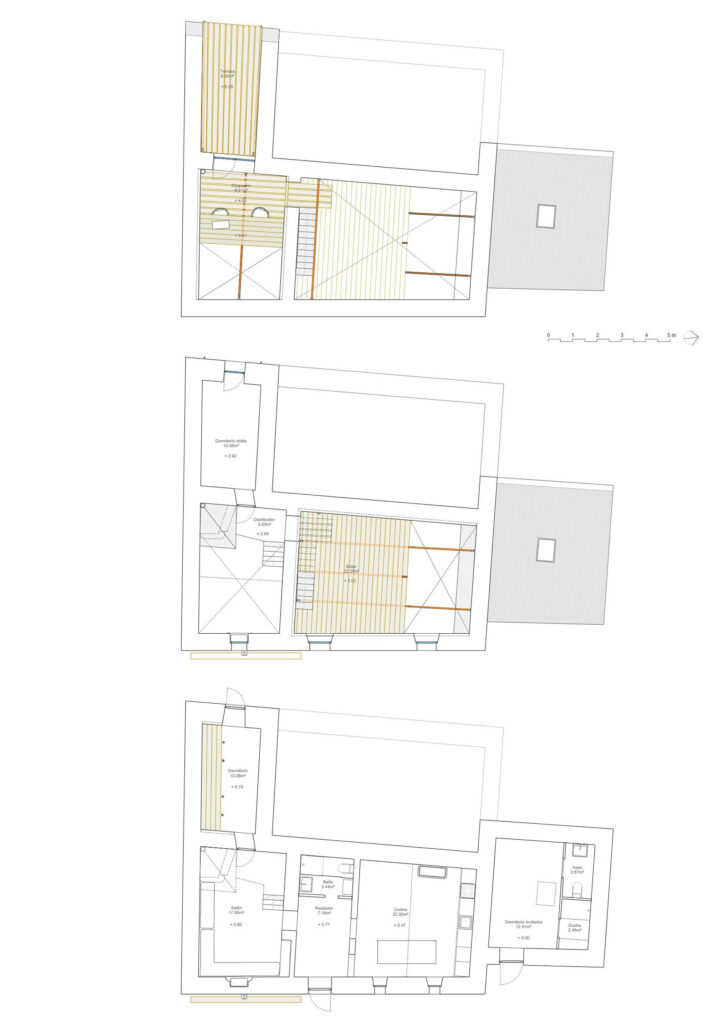
The slabs save spans of up to 5.20 meters. The planks are loose, without gluing or tongue and groove. To give them stability, there are tie-down straps that wrap them, these are fixed on the vertical stone faces using an anchoring system with stainless steel rings, making the whole work by traction.


Second, the original cover of prestressed concrete joists and fiber cement plates has been preserved, to which the second cover of fiber cement plates supported on metal strips has been placed, to generate a ventilated cover. In the west area, the original roof has been demolished to open a terrace on the upper floor and thus take advantage of the natural light from this orientation.


The entire structure remains visible, including protection on the underside of the deck made of solid pine wood slats supported on the wing of the concrete joist.
All exterior and interior carpentry, which were in poor or non-existent condition, have been replaced by new metal carpentry. And all the interior stone divisions have been preserved, cleaning up the walls and incorporating new holes to connect the spaces. Besides, other unique stone elements have been preserved, such as the stairs, the fireplace, the sink, and a sink.
The house has been articulated around two main spaces in double and triple-height, visually connected in all their diagonals and constant relationship with the outside. In them the program associated with the day is developed, such as eating, cooking, meeting, working, playing, socializing, relaxing, etc. The bedrooms are located in the integrated volume located in the west area, in a more private setting. Finally, in the annexed volume to the northeast, an additional bedroom has been located, which is independent of the main house.
To connect the vertical spaces, the original stairs have been preserved, with steps formed by large stones that unload their weight on the ground, as an antagonist, a new metal sheet stair has been designed that seems to levitate on the wooden floor.
The old block has thus become a house that is experienced as a natural topography. A cave unconventionally inhabited by little savages. As in the forest, in nature, on Mount Pindo, one has to move to look at the ground, and up, alert, with caution. A sustainable house like village houses, without technological impostures.

